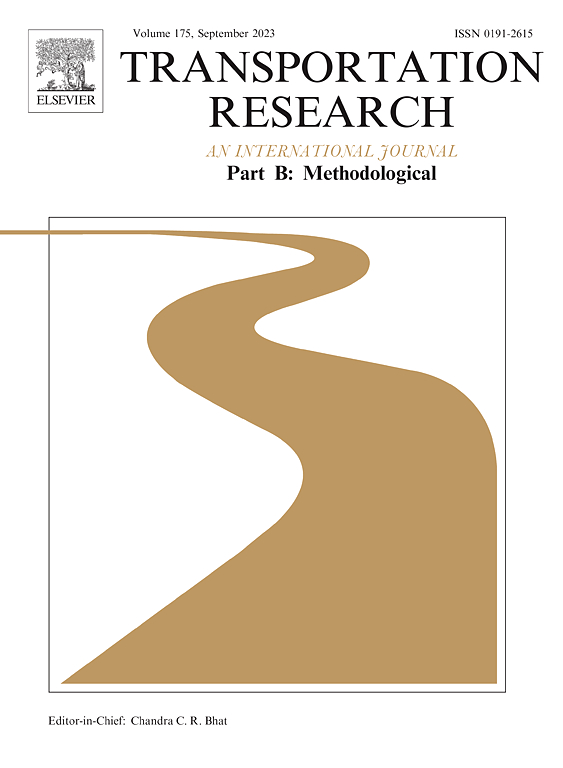Optimal private housing supply under various schemes of public housing provision
IF 6.3
1区 工程技术
Q1 ECONOMICS
引用次数: 0
Abstract
Allocating land for public housing is an essential step in providing affordable housing for low-income citizens, as practiced in Hong Kong and Singapore. Locating public housing projects in suburban areas causes a spatial mismatch between public housing tenants and job opportunities, while placing public units in urban areas exacerbates the shortage of urban land, which may result in a more compact urban development that worsens the living conditions of urban private flats. We extend the stochastic bid-rent framework to derive the optimal supply decisions of profit-seeking developers under various schemes of public housing provision. The residence and travel choices of heterogeneous households are simulated under the optimal supply decisions. We find that placing a certain number of public flats in urban areas will lead to a higher profit for developers. With more public housing in urban areas, developers condense the urban development and provide more urban micro flats to capture the privilege of accessibility, which lowers the quality of private urban flats. On the other hand, compact development accommodates more residents in urban areas, thereby alleviating congestion in suburban areas. This improvement in accessibility, however, results in rent increases for suburban private flat residents, who will suffer a loss of consumer surplus. Similarly, policy measures that aim to improve living standards or shorten the commuting time for residents (e.g., imposing restrictions on minimum flat size or upgrading suburban transport facilities) may affect the welfare of other stakeholders adversely. Thus, it is unlikely that a land allocation that improves the welfare of all stakeholders can be found, rendering the importance of considering this trade-off judiciously.
各种公共房屋供应计划下的最佳私人房屋供应
按照香港和新加坡的做法,分配土地建设公共住房是为低收入公民提供负担得起的住房的必要步骤。将公共住房项目安置在郊区会导致公共住房租户和就业机会之间的空间不匹配,而将公共住房安置在城市地区则加剧了城市土地的短缺,这可能导致城市发展更加紧凑,从而恶化城市私人公寓的居住条件。我们扩展了随机竞价-租金框架,以推导出在各种公共房屋供应计划下,逐利发展商的最优供应决策。在最优供给决策下,模拟了异构家庭的居住和出行选择。我们发现,在市区投放一定数量的公共单位将为开发商带来更高的利润。随着城市地区公共住房的增加,开发商压缩了城市发展,提供了更多的城市微型公寓,以获取可达性的特权,这降低了私人城市公寓的质量。另一方面,紧凑型发展可以容纳更多的城市居民,从而缓解郊区的拥堵。然而,这种可达性的改善导致郊区私人公寓居民的租金上涨,他们将遭受消费者剩余的损失。同样,旨在提高居民生活水平或缩短通勤时间的政策措施(例如,对最低住房面积施加限制或升级郊区交通设施)可能会对其他利益相关者的福利产生不利影响。因此,土地分配不太可能改善所有利益相关者的福利,因此明智地考虑这种权衡是很重要的。
本文章由计算机程序翻译,如有差异,请以英文原文为准。
求助全文
约1分钟内获得全文
求助全文
来源期刊
CiteScore
12.40
自引率
8.80%
发文量
143
审稿时长
14.1 weeks
期刊介绍:
Transportation Research: Part B publishes papers on all methodological aspects of the subject, particularly those that require mathematical analysis. The general theme of the journal is the development and solution of problems that are adequately motivated to deal with important aspects of the design and/or analysis of transportation systems. Areas covered include: traffic flow; design and analysis of transportation networks; control and scheduling; optimization; queuing theory; logistics; supply chains; development and application of statistical, econometric and mathematical models to address transportation problems; cost models; pricing and/or investment; traveler or shipper behavior; cost-benefit methodologies.

 求助内容:
求助内容: 应助结果提醒方式:
应助结果提醒方式:


